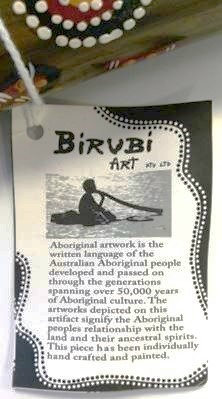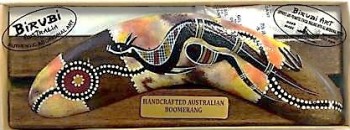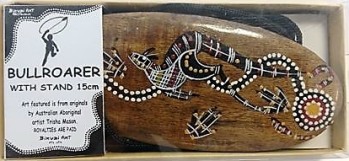
|
Indigenous Australian artistic designs are protected against fakes
The Federal Court of Australia has applied the Australian Consumer Law to protect Indigenous Australian artistic designs by penalising a seller of souvenir boomerangs, didgeridoos, bullroarers and message stones which were painted with fake indigenous designs, authenticity and provenance, the sum of $2.3 million. The decision is Australian Competition and Consumer Commission v Birubi Art Pty Ltd (in liq) (No 3) [2019] FCA 996 (26 June 2019) (Justice Perry) (the “Penalty Decision”). The decision establishes that the Australian Consumer Law can be used to protect against cultural appropriation. In this case, it was the cultural designs, images and symbols that were taken and were exploited for commercial benefit, without an understanding of the widespread economic, social and cultural harms it causes to Indigenous Australians. The Liability Decision The Penalty Decision followed the Liability Decision, in which Justice Perry found that Birubi Art had contravened the Australian Consumer Law. The facts were: Birubi Art, sourced the artefacts from Indonesia, where they were manufactured and decorated with Australian Aboriginal designs such as kangaroos, emus, crocodiles, fish and dot art by non-Aboriginal people. An Aboriginal designer, Trisha Mason, had prepared artwork for some of the products, but did not supervise or paint any of the artefacts. Birubi Art sold the artefacts to 244 retail outlets in Australia, which sold them to tourists as authentic Aboriginal Australian artefacts. Between July 2015 and November 2017, Birubi Art sold 50,000 boomerangs, bullroarers, didgeridoos and message stones to retailers.
The Penalty Decision Shortly after the Liability Decision was handed down, Birubi Art entered into voluntary liquidation. The Court gave leave to the ACCC to proceed to a penalty hearing, for several reasons which included that the Court should impose a penalty for general deterrence. The Court assessed the civil penalty by way of an intuitive or instinctive synthesis of all of the relevant factors rather than a sequential mathematical process. The main factors were:
The penalties were based on whether the misleading impression was “overwhelming” (or only a real risk of being misleading), the volume of sales, and the period of sales: Didgeridoos $700,000; Boxed boomerangs $475,000: Message stones $475,000; Loose boomerangs $450,000; and Bullroarers $200,000. The total penalties were $2.3 million. Legislative protection for Aboriginal artworks? In its media release, the ACCC stated:
But the powers of the ACCC are limited because the consumer and copyright laws are inadequate to protect the traditional heritage and cultural expressions of Indigenous Australian against cultural appropriation. A legislative response is needed. In December 2018, the Australian House of Representatives Standing Committee on Indigenous Affairs released a report - Report on the impact of inauthentic art and craft in the style of First Nations Peoples. In the Chair’s Foreword, Ann Sudmalis MP noted:
The Standing Committee made several recommendations. Some are:
A private member’s bill containing legislative effect for many of the recommendations awaits the consideration of Parliament. |
|||||||||||||||||||||||||||||||||||
|
© Copyright 2022 Cordato Partners |
||||||||||||||||||||||||||||||||||||
 The Court found that the artefacts, their labelling and
their packaging gave the misleading impression that they
were made in Australia and had been painted by an Australian
Aboriginal person. See the images.
The Court found that the artefacts, their labelling and
their packaging gave the misleading impression that they
were made in Australia and had been painted by an Australian
Aboriginal person. See the images.
